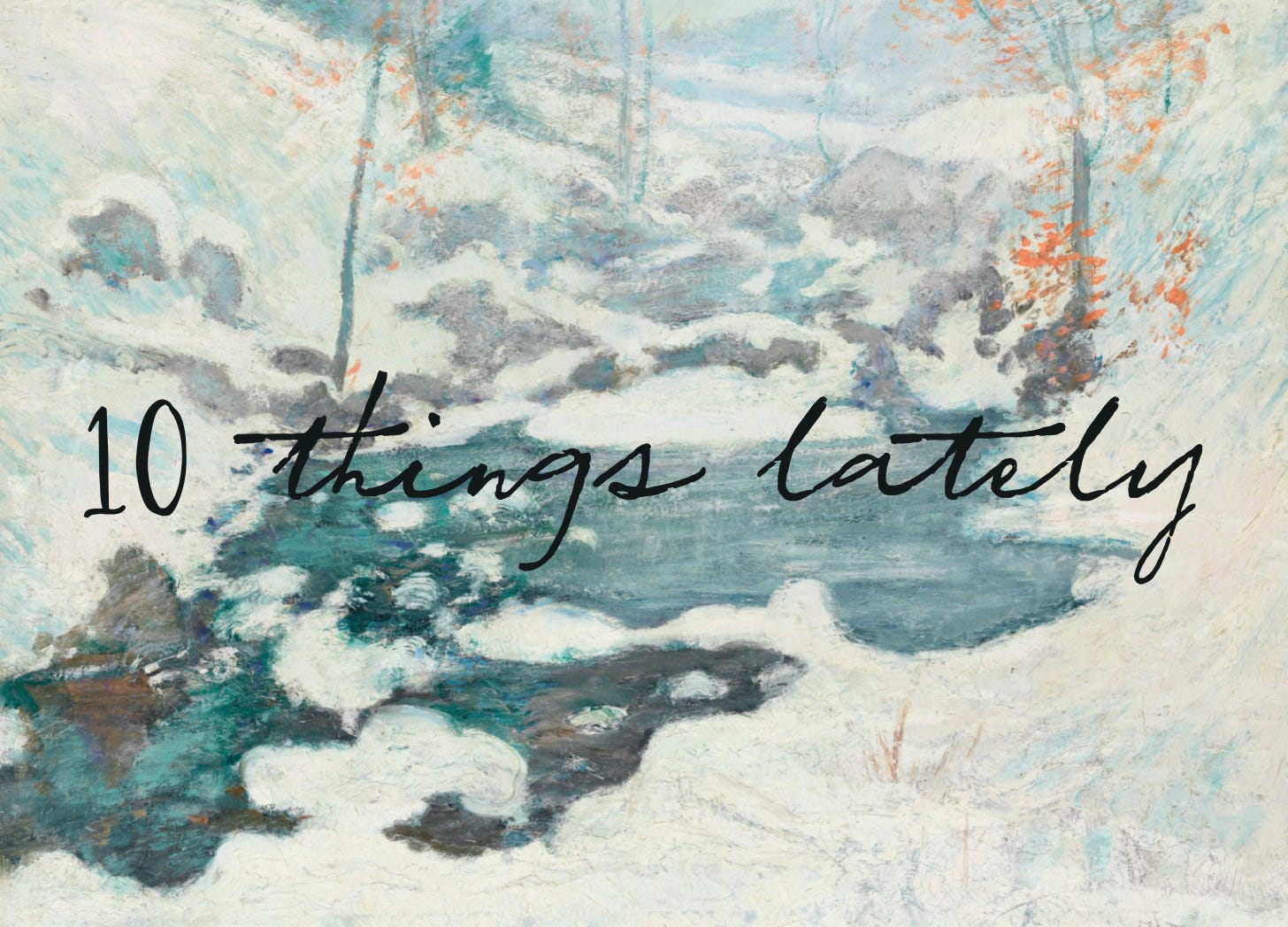I know…spring is right around the corner and I’m over here trying to embrace a “wintertime mindset.” I can hear birds singing, it doesn’t get dark at 5pm. We even had warm weather for a few days this week and I walked my dog without a jacket (for both me and her)!
But winter’s not quite over. The calendar says we’ve still got three more weeks, but Punxsutawney Phil has let us know not to expect an early spring. So until the flowers have fully popped…I kind of want to enjoy the last of winter? Have I lost you?
It’s easy to let winter bring the vibes down. When that happens, though, 3-5 months of your entire year is spent wishing it was any other time. I got to a point where I didn’t want that to be the case. There’s so much beauty to winter, both in the way it looks but also in the way it can feel.
Having grown up in Seattle, I’m actually pretty partial to drizzly days. I was accustomed to the low light and gray skies, to grasping for the sporadic sunbeams that burst through scattered clouds. I saw it as an opportunity to hunker down and take it easy.
Lately, though, I’ve been aimless and trying to overcome being tired (which, I have to remind myself constantly, is a natural reaction to winter and shorter days) and power through. Winter is time to go dormant. To rest. I wanted to learn how.
So, I read How to Winter: Harness Your Mindset to Thrive on Cold, Dark, or Difficult Days by Kari Leibowitz, PhD, which I recommended in vol. 03 of books from the past, present, future. (…and now again here. See? I really am talking about it all over the place 😆.)
I was immediately sold on learning how to harness a “wintertime mindset” and gaining practical advice that’s backed by psychological and behavioral science research. Leibowitz traveled around the world and experienced cultures that find warmth and joy in winter’s extremes. From Tromsø, Norway to Yamagata, Japan to the Isle of Lewis off the coast of Scotland, to name a few, she picked up insights along the way that help shed insight on how to embrace winter as a season to be enjoyed, not endured. By shifting our mindset, we can also shape our mentality during hard times throughout the year.
At the end of every chapter, Leibowitz shares actionable takeaways for how we can rethink winter (and what we can do). Using those guides as inspiration, I built out my own list of 10 ways I plan on embracing—yes, even for the next three weeks or so—a “wintertime mindset.”
1. Read books that celebrate, or take place in, winter.
The Frozen River by Ariel Lawhon—Over the course of one winter, a midwife and healer examines the body of a man entombed in a frozen river and determines the cause of death.
The Great Alone by Kristin Hannah—Winter in a wild, remote corner of Alaska where one family where a family moves hoping for a better future.
Wintering: The Power of Rest and Retreat in Difficult Times by Katherine May—a personal exploration of the ways we can care for and repair ourselves when life gets hard.
Red String Theory (by me)—Winter is Rooney’s favorite season and the first part of the book is spent walking around snowy NYC in the middle of February.
2. Try a sauna and cold plunge combo.
I love a sauna, but have yet to try a cold plunge. Being cold is not my favorite. Going to the sauna is supposed to have great health benefits: it relaxes, relieves stress, improves sleep, skin conditions, and circulation, it can lower blood pressure, improve lung function and reduce pulmonary diseases, reduce pain and increase mobility, boost the immune system, and provide relief for headaches and arthritis.
Cold plunges can also do so much good. They release endorphins (natural painkillers and mood enhancers), dopamine, serotonin, and norepinephrine. There are many health benefits, too, including stimulating blood flow and improving circulation, which helps deliver warm blood to fingers and toes (yay for my cold extremities).
I’m going to try a sauna-cold plunge combo in these last few weeks of winter and see how the gains feel. I’m nervous and excited, but mostly I’m ready for those feel-good chemicals from cold-water exposure.









